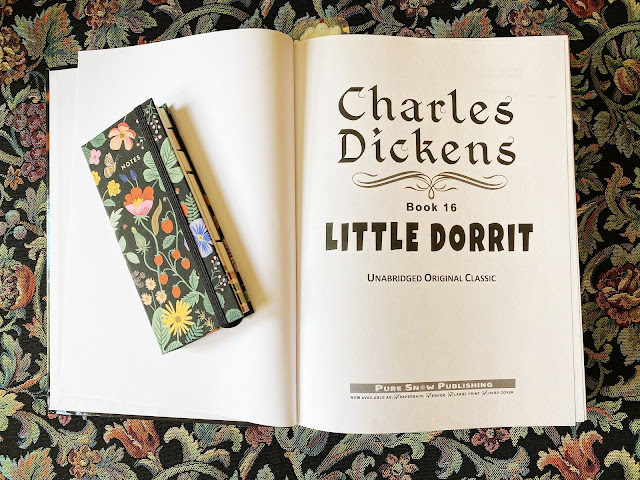“It was evident from the general tone of the whole party, that they had come to regard insolvency as the normal state of mankind, and the payment of debts as a disease that occasionally broke out.”
Arthur Clennam - Little Dorrit by Charles Dickens
Charles Dickens was an incredible creative force during his lifetime. He wrote 15 novels, 5 novellas and hundreds of short stories and non-fictional articles. He gave lectures, was a prolific letter writer and edited a weekly journal for almost 20 years. Because of personal experiences in his early life, Dickens was also a dedicated campaigner for children’s rights, education, and social reforms — including his stance as an outspoken proponent for copyright law and the protection of intellectual property.
But above all Charles Dickens was most celebrated and beloved for his pioneering of the narrative serial novel. Not only did he capture the imagination of millions during his writing career, but he also had an intense gift for a deep portrayal of a time period and a way of life in the world in which he lived.
I love to read Charles Dickens. He’s not exactly an easy read - his books are usually very lengthy works and there is a different rhythm to reading them… You don’t finish a Dickens novel in a night or even a few nights and you need a fully engaged mind. They are made to settle into - to invest in with your time and attention — but they are so worth it with their colorful characters and lasting storylines.
Charles Dickens often drew from his own life experiences to weave his deeply memorable storylines. Two novels that are great examples of this are the beloved David Copperfield and the quirky, atmospheric Bleak House. Our current read, Little Dorrit is no exception in its depiction of poverty, social injustice and the idiosyncrasies of the Victorian British legal system - all of which were close to Dickens’ heart.
Home had never been a word of such sweetness to me as after I was ensnared into the Marshalsea prison.
Little Dorrit - Little Dorrit by Charles Dickens
A torn jacket is soon mended, but hard words bruise the heart's core.
Little Dorrit - Little Dorrit by Charles Dickens
The Marshalsea Prison was located in the London borough of Southwark on the south bank of the River Thames near London Bridge. The prison housed primarily people convicted of some form of subversion; pirates, sailors who had mutinied and also debtors unable to pay their debts.
It was possible during the Victorian period in England for people to be jailed for nonpayment of debts and it could be for a long and indefinite period of time, depending on whether they were able to raise enough money to pay off their debt. It was not unusual for family members - whether wives or children - to stay in the prison with the person responsible for the debt, which was most likely the “breadwinner” husband or father.
These family members - often children - endeavored to find employment and any contributing money or earned income would not only pay off the outstanding debt but also provide for necessary food. Prisoners who could pay would have the advantage of a bar, restaurant, shop and could sometimes be able leave the prison during the day.
If your debt and lack of income was severe enough, you could be crowded into a small room with many other prisoners and the result often was disease or starvation for many imprisoned people. A British Parliamentary Committee in 1729 found that during a period of three months, 300 prisoners had died of starvation and a smaller number from hot weather during the summer months.
The Marshalsea prison operated from approximately 1329 until 1842 when most of it was demolished. There is still a length of wall remaining with a small plaque commemorating the prison and the work of Charles Dickens.
The prison darkness had a lasting hold upon them both, and was the pervading influence in their new lives.
Narrator - Little Dorrit by Charles Dickens
Our main character in this quarter’s read is Amy Dorrit or “Little Dorrit”, daughter of William Dorrit, inmate of Marshalsea prison. Little Dorrit is born in and spends her growing up years in the prison, venturing out with her siblings to earn meagre wages during the day. Working as a seamstress for the severe invalid, Mrs. Clennam, Amy falls under the notice of the son, Arthur Clennam and a rich storyline ensues…
Life is made of ever so many partings welded together.
Little Dorrit - Little Dorrit by Charles Dickens
We will all be able to share our thoughts and ideas as we meet for a Spring Book Breakfast at the end of April to discuss Charles Dickens’ work, Little Dorrit. There is plenty of time to read this one but you may want to get started soon - it is worth the effort!







Great article! Lovely Blog...
ReplyDeleteThank you so much!
Delete